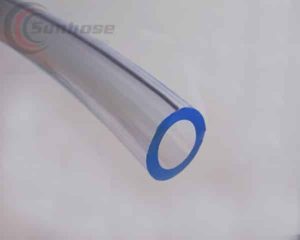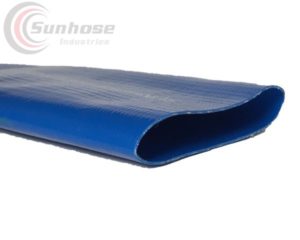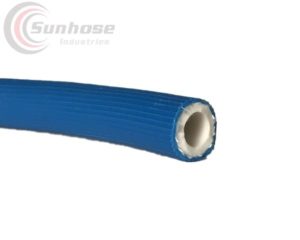The difference between PVC, UPVC, PP, and PE
PVC is Polyvinylchloride, the main component is PVC, and other ingredients are added to enhance its heat resistance, toughness, ductility, and so on. Or a polymer polymerized under the action of light and heat according to the mechanism of free radical polymerization. Vinyl chloride homopolymer and vinyl chloride copolymer are called vinyl chloride resin. It is a kind of synthetic material that is very popular and widely used in the world today.
The addition of plasticizers can reduce the temperature, facilitate processing at a lower temperature, increase the flexibility and plasticity of the molecular chain, and can be made into flexible soft products at room temperature, general soft plastic products. The extruder can be used to extrude the foreskin of PVC hoses, plastic wires, cables, and wires. Plastic sandals, soles, and slippers can be made by injection molding and various molds. PVC is mixed with stabilizers, lubricants, and fillers. After mixing, the extruder can be extruded into various caliber hard pipes, special-shaped pipes, and bellows, which can be used as sewers, diversion pipes, wire sleeves, or stair handrails.
Rigid PVC has good tensile, bending, compression, and impact resistance, and can be used as structural materials alone. The elongation at break and cold resistance of soft PVC will increase, but the brittleness, hardness, and tensile strength will decrease.
The difference between PVC and UPVC is that UPVC is not plasticized and has relatively high strength.
UPVC has excellent chemical resistance in the whole working temperature range and has a wide working pressure band. Due to the long-term high strength characteristics, stiffness and cost-effectiveness, the UPVC system accounts for a considerable proportion of plastic pipe installation.
PP (polypropylene) is a colorless, odorless, non-toxic, translucent solid substance, a thermoplastic synthetic resin with excellent properties, and a colorless translucent thermoplastic light general plastic. Polypropylene is suitable for use in food, drinking water, and ultra-pure waters, as well as in pharmaceutical, chemical, and other industries.
PE (polyethylene) polyethylene has been successfully used for many years in the safe transportation of drinking water and wastewater, hazardous waste, and compressed gases.
Differences Between PVC and uPVC
PVC and uPVC may seem similar, but they have distinct differences. The main difference lies in their flexibility. PVC contains plasticizers, which make it more flexible and easier to shape. On the other hand, uPVC lacks plasticizers, making it more rigid and less prone to deformation. uPVC is commonly used for window frames, while PVC finds applications in plumbing and electrical systems.
Differences Between PVC and PP
PVC and PP differ in their chemical composition and properties. PVC is more resistant to impact and harsh chemicals, making it suitable for applications where chemical resistance is crucial. PP, on the other hand, has a higher melting point, making it more heat-resistant. PP is commonly used in the automotive industry for components like bumpers and interior trim.
Differences Between PVC and PE
PVC and PE have contrasting properties and applications. PVC is a rigid plastic material, while PE is more flexible. PVC is often used in construction, where its strength and durability are important factors. PE, on the other hand, is commonly used in packaging and plastic bags due to its flexibility and low cost.
Differences Between uPVC and PP
uPVC and PP exhibit notable differences in their characteristics. uPVC is known for its rigidity, making it suitable for applications where dimensional stability is essential, such as window frames and pipes. PP, on the other hand, has good impact resistance and is commonly used in the automotive industry and for household items like storage containers.
Differences Between uPVC and PE
uPVC and PE differ in terms of their flexibility and applications. uPVC is rigid and less flexible, making it ideal for structural applications. PE, on the other hand, is highly flexible and finds use in various packaging materials, plastic bags, and bottles.
Differences Between PP and PE
PP and PE have distinct properties and applications. PP has a higher melting point and better heat resistance compared to PE. It is used in applications where durability and toughness are essential, such as automotive components and household appliances. PE, with its low cost and excellent electrical insulation properties, is commonly used in packaging and electrical wire insulation.
Comparison of Properties
| Property | PVC | uPVC | PP | PE |
|---|---|---|---|---|
| Flexibility | Flexible | Rigid | Flexible | Flexible |
| Chemical Resistance | Excellent | Excellent | Good | Good |
| Impact Resistance | Excellent | Good | Good | Fair |
| Heat Resistance | Fair | Fair | Excellent | Fair |
| Electrical Insulation | Good | Good | Fair | Excellent |
Common Applications
- PVC: Plumbing systems, electrical wiring, signage, flooring
- uPVC: Window frames, pipes, cladding
- PP: Packaging, automotive components, household appliances
- PE: Packaging, plastic bags, bottles, artificial joints
Environmental Impact and Sustainability
When considering the environmental impact, it is important to note that PVC and uPVC have raised concerns due to the presence of chlorine in their composition. However, advancements in recycling technologies have improved their sustainability. PP and PE, on the other hand, have a better environmental profile as they are widely recycled and have less chlorine content.
Conclusion
In conclusion, PVC, uPVC, PP, and PE are distinct plastic materials with their own unique properties and applications. Understanding the differences between them is crucial when choosing the right material for a specific purpose. PVC offers flexibility and chemical resistance, uPVC provides rigidity and dimensional stability, PP excels in heat resistance, and PE stands out with its low cost and flexibility. By considering their characteristics, we can make informed decisions regarding their usage, taking into account factors like durability, impact resistance, heat resistance, and environmental impact.





 sunhose
sunhose sunhose
sunhose